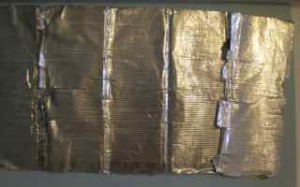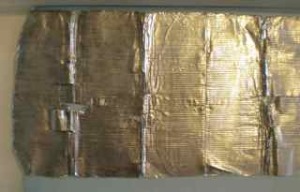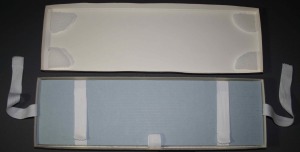Spicer Art Conservation is pleased to be part of the efforts to recover the earliest recorded sounds dating from 1878. On June 20, 1878, in St Louis, Thomas Edison’s phonograph is demonstrated to an audience. The recording from that demonstration was captured on a piece of tin-foil which was later folded and stuffed into an envelope where it stayed until it was found in the miSci (formerly Schenectady Museum) archives. The Museum wanted to make it readable again and was told it could be done, but only if the ripped, creased, and crushed pieces of the foil could be flattened. miSci contacted Spicer Art Conservation and we were thrilled to take on such a unique task. Once it left our studios it went to California’s Berkeley Lab where it was read by scanning the surface. Now, finally the sound has been revealed. The 1+ minute recording consists of a brass instrumental, the recitation of “Mary Had a Little Lamb” and “Old Mother Hubbard” along with some laughter and inaudible speech. A more detailed account can be read on our blog at: Inside the Conservator’s Studio and a viewing of the unveiling event can be watched at: www.misci.org
Below is the before image of a full sheet of “Tinfoil”.
The tinfoil phonograph was developed in 1877 and consisted of a brass cylindrical mouthpiece closed by a membrane of parchment or goldbeater’s skin using a steel stylus with a sharp chisel-shaped edge at its center.
Read more about Edison’s amazing invention here: Inside the Conservator’s Studio.
Below, the after treatment image of the flattened Tin-Foil. A custom made travel box has been created for the sheet to be safely hand carried to its next phase.




